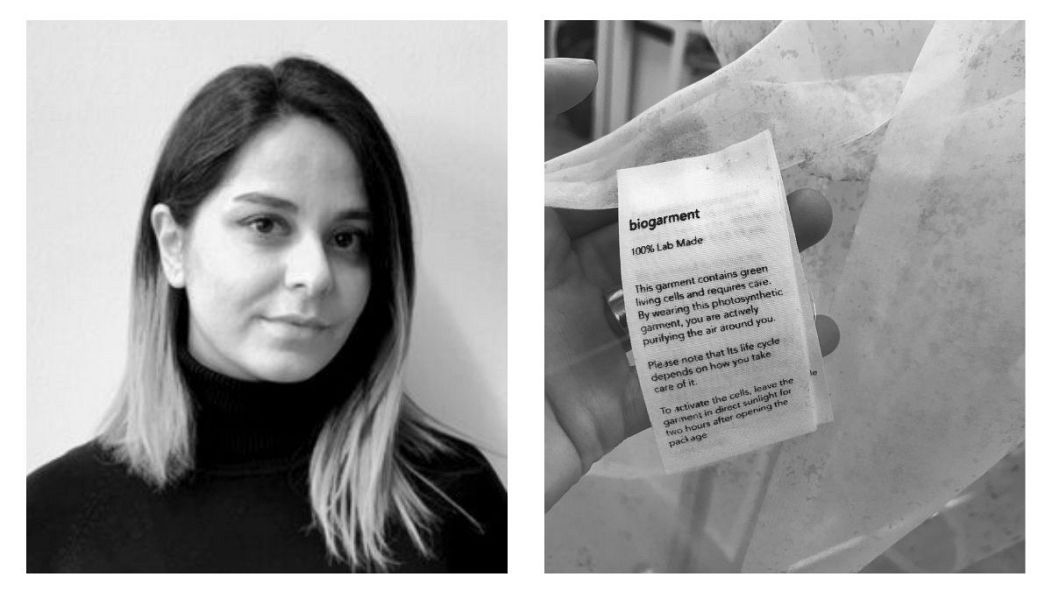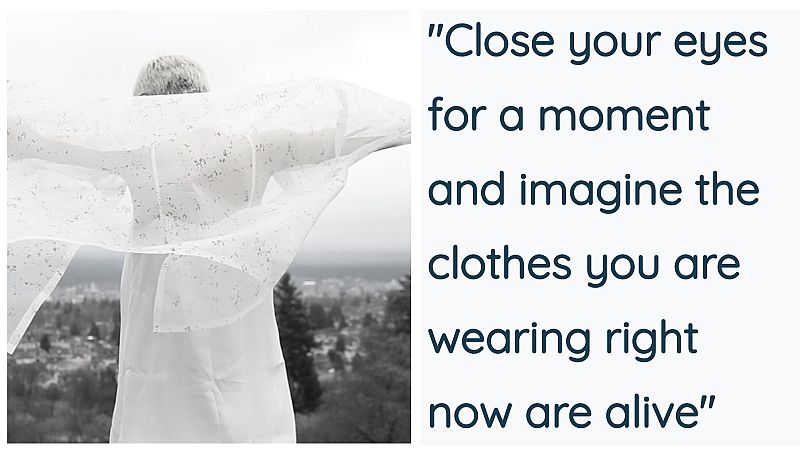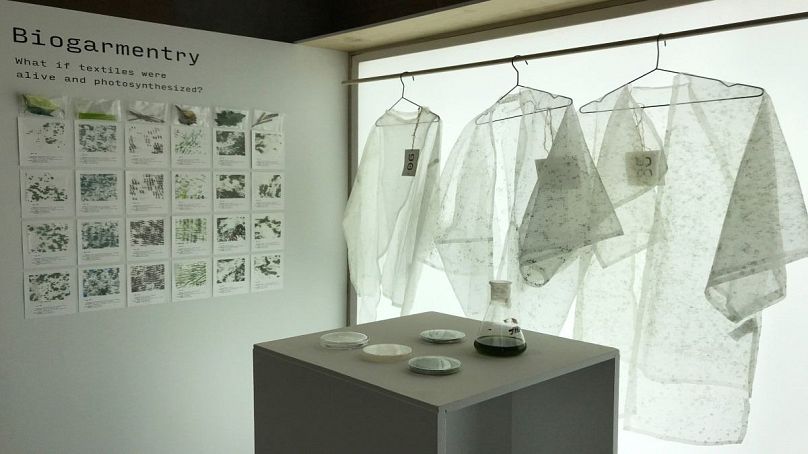Roya Aghighi's biogarmentry is made from cells that photosynthesise as you wear them.
Over the last 30 years, fast fashion has encouraged consumers to develop an insatiable desire for the new meaning that the old is often thrown away before the end of its life.
As clothing has become increasingly disposable, an environmental catastrophe has been brewing that is directly related to the bad relationship we have with our wardrobe. According to multidisciplinary designer, Roya Aghighi, this “passive act” of consumption prevents us from engaging with what we wear so that we don’t notice the incredible amount that we neglect and waste.
“Clothing is the closest object to our body yet the only times we are conscious about it is at the beginning of the day when we choose what to wear or when we spill coffee on it,” Aghighi says.
Materials, she reveals, are the key to changing how we interact with everyday items like clothing and revolutionary changes could shape our experiences for the better. “My approach to bio-design goes beyond only considering it as problem solving,” she tells Euronews Living, instead she focuses on how the design process can be rebuilt from the bottom up to make us rethink these wasteful habits and behaviours.
Read More | This expo is uniting designers with thousands of responsibly sourced materials
Not your usual cotton jacket
This is where “biogarmentary” comes in. A “vision of the future”, Aghighi’s innovative project presents items of clothing constructed from a material that photosynthesises. Created in collaboration with the Materials Experience Lab and scientists from the University of British Columbia, the textile is made from a combination of natural fibre based fabrics and living photosynthetic cells. These single-celled, green algae, could even purify the air around you as they “breathe”.
This thought-provoking approach goes beyond providing a sustainable fashion solution, however. Unique care instructions require wearers to form a more complex relationship with Aghighi’s clothing than with their usual cotton jacket.
“In taking care of the current biotextile which is made out of Algae, users need to be aware of the fact that they don’t need to wash their clothes,” she says, “They could simply submerge the living textile into water when the textile requires to be washed which will provide the cells with necessary water”. The material also loves light meaning that shoving it to the back of the cupboard won’t do it any favours.
“Close your eyes for a moment and imagine the clothes you are wearing right now are alive,” she says, “With that thought, your interaction with your daily clothes would imminently change. You are less likely to throw your clothes in a dark closet or washing machine. It could even make users more conscious about daily choices as simple as where is safe to sit, or if you knew your garment could feed off your sweat would that encourage you to exercise more?”
Caring for your clothing
If biogarmentry were a widespread thing, whether or not your clothing survived would be directly related to the attention you give it. Through increasing care and awareness of its needs a transformation of values would occur that could help reduce waste by changing our perception of textiles. Aghighi hopes this project will inspire a shift in perception surrounding clothing implementing what the designer calls a “deeper, more holistic idea of change”.
Biogarmentry allows its owner to form a more intimate relationship with their clothing to transform attitudes of "buy, use and dispose" to "buy, care for and compost". Although it is only a proof of concept for the new material, it raises clear questions about how we interact with what we wear.
“In other words, biogarmentry aims to utilize humans emotional attachments to living creatures to bring the lost value and agency back to textiles and clothing consumption,” she says, “It challenges our current relationship to clothing while acting as a catalyst for behavioural change.”
Read More | The sustainable accessories coming to life on Kickstarter this autumn
A shift away from our current consumerist attitude is desperately needed. Instead of buying in line with constantly changing kaleidoscope of fashions, longevity needs to be higher up on our list of desirable characteristics. “In the current fashion industry more than 90% of clothes don’t even reach their mid-way potential,” Aghighi explains, “ Most clothes find their way into landfill after only second or third wear.” In the UK this amounts to around £140 million worth of clothing being thrown away each year with £30 million hidden away unused in wardrobes, according to WRAP.
Aghighi is confident that design using innovative materials is the best way to inspire this much-needed change. “I believe that no change will happen until we shift our fundamental beliefs and habits. I see materials as building blocks of the design process which could have an invaluable impact on human interactions with their surroundings.”
By challenging how we currently view clothing, Aghighi hopes that this project could be an inspiring catalyst for behavioural change to support a more sustainable culture. Inspired by an incredible disconnect, biogarmentry represents a radical future that could help solve fashion's growing problem with pollution and waste.














